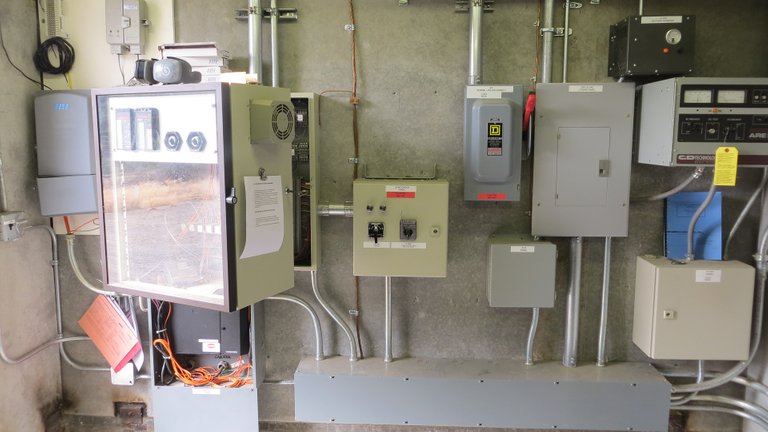3 Power System Analysis Deliverables To Insist on During Your Next System Study Report

There are 3 items that must be included and there are a few things that should never be included in a the body of a power system study report. Also - there are some sources of information that are important for you as a client to have to effectively evaluate a consultants expertise in the area. The added bonus of having these on hand as a backup is that you can also use the moment and info as an opportunity to educate the non-electrical workers and managers in your company about things they might not otherwise have cause to consider.

Let's outline the power system study report
Power System Analysis Deliverables
These might be phrased differently from consultant to consultant, but generally speaking the 3 high level deliverables you want included at the end of the project are:
- The Power System Analysis Report itself (complete with detailed recommendations of course)
- Updated drawings with ALL new information - onelines, switchgear drawings, etc. clearly and explicitly noted and accounted for.
- The Power System model within the appropriate existing or selected software of your choice. Ensure it is complete with any custom libraries!
- Capital Budget estimates to implement selected recommendations
- Updated Electrical Safety Program Documents. For example:
- Labels from the incident energy study
- Updated information for Energized Work Permits
- etc.
Power System Analysis Report
Sure everyone should outline the sections that will be included in the report when scope is discussed, but typically that just means that we only mention the specific study results and a section for recommendations. If this is all you're doing out of the gates you've narrowed the readability and usefulness of the report to wider audiences. Because the report body isn't the place to educate the reader about what the different studies are, the pros and cons of different methodologies, or even discussing why it was a good idea to have the study completed in the first place, you need to think about how the work product as a whole will be received when the report gets distributed to people that don't have an electrical background or who need to be brought up to speed. Here's the tip I use at JMK Engineering:Include appendices with articles and short whitepaper reports describing what the studies are and how they can be used. This keeps the report on topic, but expands the audience of the complete report.Seems obvious right? But think back to your own experiences: how many times have you come across a seemingly well written, well thought out piece of work that you just could "get into" because you were missing some element of structure, or frame of reference, or explanatory note to say "this is where you in the information landscape, and this is how we'll get through this together." Once you've got that structural component taken care of we can get into the more straightforward meat and potatoes of the report itself. Starting with:
The Introduction
The introduction is the place in the report where the reader is orientated as to what this report is all about. The introduction should include the purpose and scope of the report, the methodology used to gather data and study the system, as well as the standards that were referenced during the work. The sub-headings might vary from project to project, but JMK Engineering's approach tends to look like:- Purpose
- Scope
- References
- Definitions
- Assumptions and Limitations
- Project Methodology
Study Analysis Sections
Each study (eg. short circuit, protection coordination, incident energ, load flow etc.) - should have their own chapter in the report as each is speaking to a unique aspect and/or audience. Bundling them together is a disservice to anyone using the report after the fact. Each of these should have the following sub-sections:- Introduction
- Study-specific scope items
- Study-specific source information (utility supply, motor loading assumptions for load flow, system configurations reviewed, etc.)
- Thresholds used for warning and critical for the results.
- Study Results
- Important: This is only a summary of the results including separate tables for the warning and the critical items. The point is to present the facts and keep the reader moving.
- Study Recommendations
- These recommendations are for the "what needs to be done", not the "how to actually do it". It could be that all the critical lines need to be addressed, but it could be a procedural change (eg. "Don't put the system in that configuration.")
Appendices
Who doesn't love a few dozen (hundred?) pages of detail! The appendices will include the complete analysis outputs for the various studies, including all time current curve's (TCC's) for the protection coordination studies. The appendices should also include any pertinent source information that was used in developing the model and report. Here's a sample list of appendices JMK has used in past reports:- Original Proposal (including scope, etc - good for recapturing and reemphasizing the origins and assumptions underwriting the project if needed "in the moment")
- Data Collection Sheets
- Relevant Correspondence ("Remember that thing, that guy said, about the stuff?")
- With the client, utility, suppliers and anyone else that provided useful information that was used as part of the analysis.
- Incident Energy Labels
- What is Short Circuit, Selective Coordination, Incident Energy and Load Flows.
- This is a synthesis of four different articles in one appendix.
Updated Drawings
Next the drawings that are affected by the study and its recommendations need to be updated. We find that drawings typically lag behind the changes in the field over time, and during the data collection effort we find a number of conflicts, equipment added or removed and settings changed. The power system study is the perfect opportunity to further reduce and manage risk or potential for mistakes by getting these drawings in sync with what is actually in place. The oneline is always caught, but there are other drawings that should be looked at for inconsistencies. These can include:- Threeline diagrams
- Motor Schematics
- Switchgear and MCC Drawings
- Panel Schedules
Power System Model
If you are having an outside resource develop the model, we still recommend you receive a copy of the model and any custom library items electronically. Ideally this will be included on a thumbdrive and included with the report as an appendix. The best reason for this is that the power system study report is not a static thing. As the system changes it will be updated, and regulations like CSA Z462 and NFPA70E require it be be updated no less than every 5 years. After doing all the work (and spending the money) to get the original completed, it is much easier to update with changes than go through the entire process every 5 years. If the contractor/consultant moves on, or doesn't have good data retention practices, you will lose this data. Get a copy for your records. Pause. Now say it again with me: "Get a copy for your records". Excellent!Optional Deliverables
This list of deliverables is not exhaustive, and depending on the scope of the power system study you will of course want to include others. Two that I recommend irrespective of specific needs that apply to all projects are: Capital Budget(s), and Electrical Safety Program Update requirements arising out of the report. Let's dive into each of these next and then bring this post in for a landing.Capital Budget Development
You likely have a capital budget cycle that is used to determine what capital projects will be completed in the coming years. Based on the recommendations outlined in the report, there are typically additional engineering and installation that will be needed to fulfill the recommendations and make the system safe. To develop these budgets there is some initial engineering design required, but the entire design does not need to be completed in most cases. To present a complete package to management, and allow business decisions to be made, the capital budget report should include the following for each recommendation:- Recommendation and why it is needed (Scope)
- Options - if there are any
- Capital cost for each option in today's dollars
- This should include engineering, procurement, and installation/construction
Electrical Safety Program Updates
If you included an incident energy study in your report, and you have an existing electrical safety program, you will want to make any necessary updates. This may include adding information to the energized work permits, adding new labels and updating the training information.Conclusion
The deliverables related to a power system study are not just labels and an output for the software. To be useful, informative, and actionable we need to include everything mentioned above. A good consultant will include all the critical deliverables (even if you didn't include) them in the RFP. Hopefully this post gives you some deeper insight to know when and how to test whether a low-cost bidder is planning on cutting corners in the short term at the expense of long term value. and it's a topic we are always interested in talking about in more detail. If you have any thoughts or stories to share, please get in touch, we'd be happy to hear from you! Originally posted on Sparky ResourceIf you like this article and want to hear more sign up for our newsletter at jmkengineering.com/newsletter
0
0
0.000
Thanks for your contribution to the STEMsocial community. Feel free to join us on discord to get to know the rest of us!
Please consider supporting our funding proposal, approving our witness (@stem.witness) or delegating to the @steemstem account (for some ROI).
Please consider using the STEMsocial app app and including @stemsocial as a beneficiary to get a stronger support.